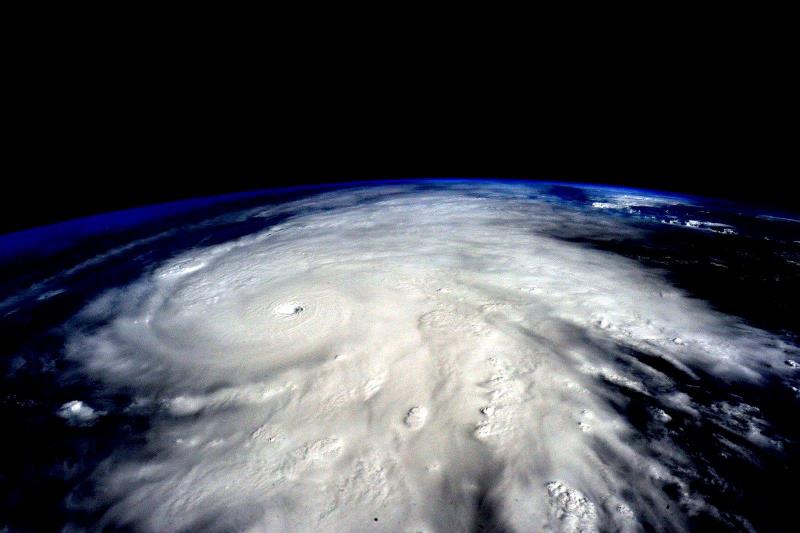MIAMI – The U.S. government will release its forecast Friday for how many hurricanes and tropical storms are expected to form over Atlantic and Caribbean waters in the next six months.

It’s an annual reminder from the National Oceanic and Atmospheric Administration (NOAA) that coastal living comes with significant risks.
The Atlantic hurricane season officially starts June 1, but tropical weather got a head-start this year: Hurricane Alex made an unseasonable debut in January over the far eastern Atlantic, and the National Hurricane Center says an area of low pressure between Bermuda and the Bahamas could be brewing into something bigger Friday or Saturday.
READ MORE: Hurricane Alex forms in Atlantic; First January hurricane to develop in 78 years
The long-term season averages are 12 named storms, with six hurricanes and three “major” ones with winds topping 177 km/h.
2015 Tally
The 2015 season was slightly below average with 11 named storms, including two tropical storms that made landfall and caused flooding in South Carolina and Texas. Hurricane Joaquin, one of two storms to reach major hurricane strength, killed all 33 mariners aboard a cargo ship that sank off the Bahamas in October.
A U.S. Coast Guard panel is investigating the sinking of the El Faro, which was sailing from Jacksonville, Florida, to Puerto Rico when it got caught in Joaquin. Testimony since mid-May has shown the ship’s captain received outdated storm information the day before the ship sank. Initial forecasts for Joaquin also were wildly inaccurate.
Coastal Risks
The last major hurricane to strike the U.S. mainland was Hurricane Wilma, which cut across Florida in 2005. Since then, the population in the 185 coastline counties most threatened by hurricanes has grown 8.7 per cent to 59.2 million people, according to U.S. Census estimates.
WATCH: NASA captures stunning view of Hurricane Alex from space

Overall, 143.6 million people – 44.7 per cent of the U.S. population — from Maine to Texas could be living in harm’s way. Other Census figures hint at the potential financial risks throughout those states: 60.1 million housing units and 3.3 million business establishments with 52.3 million paid workers.
Storm winds can reach frightening speeds, but they aren’t the deadliest threat. According to the National Hurricane Center in Miami, storm surge and rainfall flooding combine for three-quarters of all U.S. deaths from hurricanes, tropical storms or tropical depressions.
Major Damage
In the Bahamas, Joaquin caused over $60 million in damage, according to the hurricane centre. The islands reported widespread flooding that contaminated drinking water, cut off an airport and swamped a local fishing fleet.
Even “minor” storms can leave misery behind. After Tropical Storm Erika swept through the Caribbean last year, damage estimates on the island of Dominica ranged up to $500 million for homes, roads, bridges and infrastructure, and Puerto Rico reported $17.4 million in agricultural losses for plantains, bananas and coffee.

These lessons have hit home in the Northeast, wracked by catastrophic flooding first from Hurricane Irene in 2011 and again from Superstorm Sandy in 2012. Damage estimates tallied in the tens of billions of dollars.
Due to the financial hardships left in Sandy’s wake, the Federal Emergency Management Agency said Monday that it’s overhauling its appeals process for flood insurance claims with more transparency and oversight. Homeowners will be able to take disputes directly to FEMA instead of first going through the insurance companies they’re fighting.
Climate Change
Rising sea levels are expected to increase the vulnerability of coastal communities to flooding from tropical systems. While some aspects of hurricane development still aren’t fully understood, recent research indicates climate change is likely to make hurricanes more intense in the future.
READ MORE: How powerful was Hurricane Patricia and why didn’t it do more damage?
Improved computer models show that warming atmospheric conditions may hinder tropical cyclone development worldwide, says David Nolan, a University of Miami professor of atmospheric sciences.
But the hurricanes that do form could grow more intense because ocean temperatures will be higher, Nolan says. Warm ocean waters feed hurricanes like fuel in an engine.
“The ones that do occur could be a little bit stronger,” Nolan says, “but the changes over the next 10, 20, 30 years would be very small, almost undetectable.”




Comments